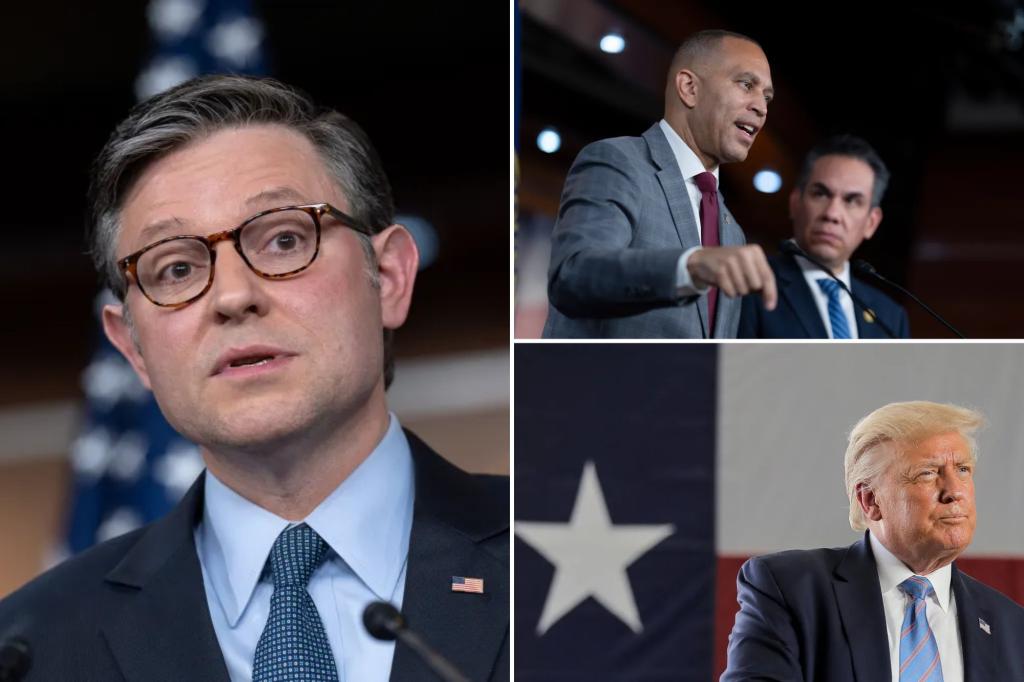Averted Government Shutdown: House Republicans Strike a Deal
House Republicans, facing an impending government shutdown, have reached a consensus on a new funding deal after a prior, more extensive agreement collapsed under pressure from fiscal hawks. The fresh agreement, significantly shorter at 116 pages, aims to maintain government operations for three months while addressing key priorities like farm aid, disaster relief, and the debt ceiling. Former President and current presidential candidate Donald Trump has publicly endorsed the deal and urged all House members, Republicans and Democrats, to support its swift passage. The agreement comes as a relief following a day of intense negotiations and uncertainty within the Republican caucus.
The new agreement represents a streamlined version of its predecessor, shedding several provisions that drew criticism from fiscal conservatives, including a congressional pay raise, funding for the Francis Scott Key Bridge, and pharmaceutical benefit manager reforms. The focus appears to be on essential funding priorities, with a three-month extension providing a temporary reprieve from the shutdown threat and allowing time for more detailed budget negotiations. The inclusion of farm aid and disaster relief addresses critical needs, while the two-year suspension of the debt ceiling until January 30, 2027, removes another immediate fiscal hurdle.
The Path to Passage: A Race Against Time and Internal Divisions
The expedited timeline for a potential vote necessitates maneuvering around traditional House procedures. While leadership aims for a rapid vote, bypassing the Rules Committee requires a two-thirds majority, meaning Democratic support is crucial for passage. This reliance on bipartisan cooperation adds another layer of complexity, especially considering Democratic leaders’ initial preference for the previous, bipartisan agreement. House Speaker Mike Johnson, who spearheaded the negotiations, faces the challenge of uniting his caucus while also securing enough Democratic votes to prevent a shutdown.
Trump’s Influence and Intra-Party Tensions
Trump’s vocal support for the revised deal has undoubtedly influenced the trajectory of negotiations, signaling his involvement in the process despite holding no official government position. His endorsement, delivered via Truth Social, puts pressure on Republicans to fall in line, while also appealing to Democrats’ sense of national responsibility. This intervention follows his opposition to the earlier bill, which he deemed excessive and fiscally irresponsible. However, the deal is not without its detractors, even within the Republican ranks. Rep. Chip Roy (R-Texas), a prominent fiscal conservative, voiced his disapproval, characterizing the revised agreement as a watered-down version of the rejected bill.
The Fate of the Deal and the Looming Shutdown Deadline
The ultimate fate of the deal hangs in the balance, with several factors influencing its passage. Democratic support is essential, yet their willingness to cooperate remains uncertain, particularly given their prior commitment to the now-defunct bipartisan agreement. House Minority Leader Hakeem Jeffries underscored the Democrats’ focus on supporting families, farmers, and working-class Americans, suggesting they might be hesitant to endorse a deal perceived as less comprehensive than the original. Time is of the essence, with the shutdown deadline looming.
Beyond the House: The Senate and the President
Even if the House manages to pass the funding measure, further hurdles await. The Senate must also approve the bill, and President Biden must sign it into law to avert a shutdown. The Senate’s dynamics differ from the House, and the bill’s passage in the upper chamber is not guaranteed. President Biden’s position is also crucial. While he likely prefers to avoid a shutdown, he may have reservations about certain aspects of the Republican-led agreement. His signature is the final step, and his decision will have significant implications for government operations and the political landscape.
The Aftermath: Short-Term Fix or Long-Term Strategy?
Regardless of the outcome, the current situation highlights the deep divisions within Congress and the challenges of navigating complex fiscal issues. The three-month funding extension, if enacted, provides only a temporary fix. Further negotiations will be necessary to address long-term budget priorities and avert future shutdown crises. The political ramifications of the current standoff could be significant, influencing public perception of both parties and potentially impacting the upcoming elections. The ability of Congress to find common ground and address critical funding needs will be a key test of its functionality and its commitment to serving the American people.

